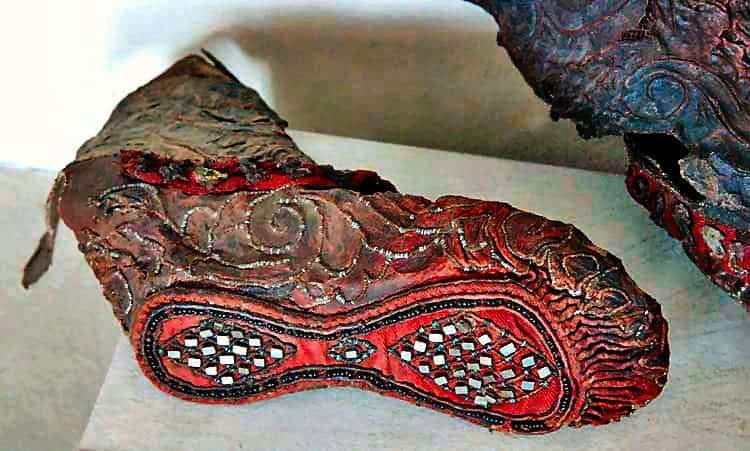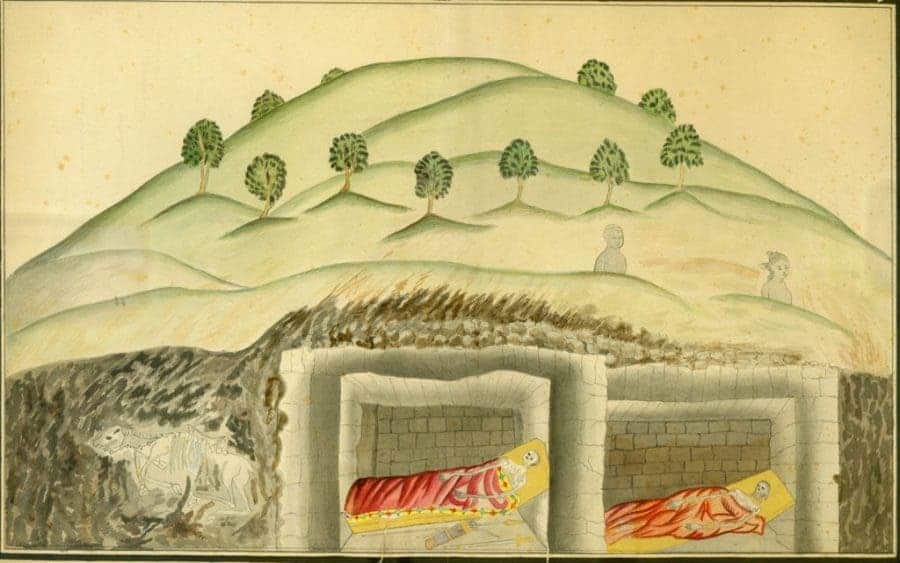
It’s hard to find a decent pair of boots that don’t disintegrate after one year these days, let alone 2,300 years. Believe it or not, that’s how old this astonishing boot, discovered in a Scythian burial mound in Siberia’s frigid Altai Mountains, is.
The red cloth-wrapped leather boot was discovered in 1948, alongside jewelry, food, weapons, and clothing. Like many ancient cultures, the Scythians buried their dead with various belongings that may have come in handy in the afterlife.
It was also customary for the Scythians to construct burial mounds by building wooden structures in the bottom of deep holes that they dug. These log cabin-like burial mounds were lined and floored with dark felt, while the roof was covered with layers of larch, birch bark, moss, and other local materials.

That’s pretty impressive and rather surprising considering the Scythians (pronounced ‘SIH-thee-uns’) were nomadic warrior people. The Scythians flourished from 900 BC to around 200 BC, and at their point of maximum expansion had an influence extending over Central Asia, from the northern Black Sea all the way to China.
There is much we don’t know about Scythian culture since they didn’t leave written records. However, we do have accounts written by ancient people who actually employed writing, such as the Greeks, Assyrians, and Persians. One thing’s for sure, they all seemed pretty terrified by them.
Writing in his 5th-century BC book Histories, Herodotus said that ‘None who attacks them can escape, and none can catch them if they desire not to be found.’
One of their trademark features was the use of a powerful type of bow made from different layers of wood and sinew, which proved game-changing on the battlefield. Centuries before the Huns and their Golden Horde, Scythians employed large numbers of mounted archers that could shower hundreds of deadly missiles within minutes, raining death upon their enemies.
Apart from the writings of historians from other cultures, which typically centered around war, what we know about the Scythians is largely through excavations of their burial mounds, called kurgans.
Being nomadic people, the objects that they buried with their dead were of the same nature as the objects that were employed in day to day life: portable, lightweight, and small. Some of the artifacts found in the Scythian burial molds include small drinking flasks and wooden bowls.
Other times, Scythians buried amazing artifacts such as this woman’s boot, which is made of soft red leather and has a sole adorned with geometric patterns sewn with pyrite crystals and black beads.
But why would someone take so much effort to decorate the surface of a boot that would simply deteriorate from walking? Some historians believe that Scythians regularly socialized around fires while sitting on their knees. In this pose, the bottom of the shoes would be visible to others to see. Alternatively, the shoes may have been made exclusively for burial, which would explain their immaculate state.
In addition, the combination of the sturdy kurgan structures and the frozen Siberian Altai Mountains made it possible for this stunning boot to be preserved in time.
The stunning Scythian artifact is now housed at display at the State Hermitage Museum in St. Petersburg, Russia.
Was this helpful?



